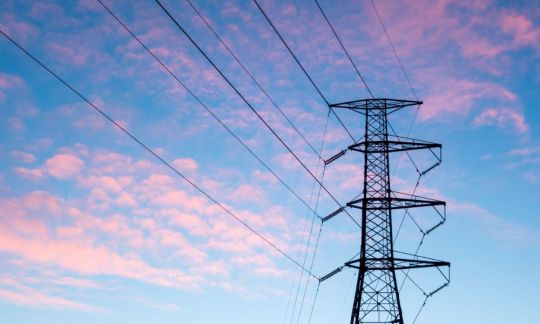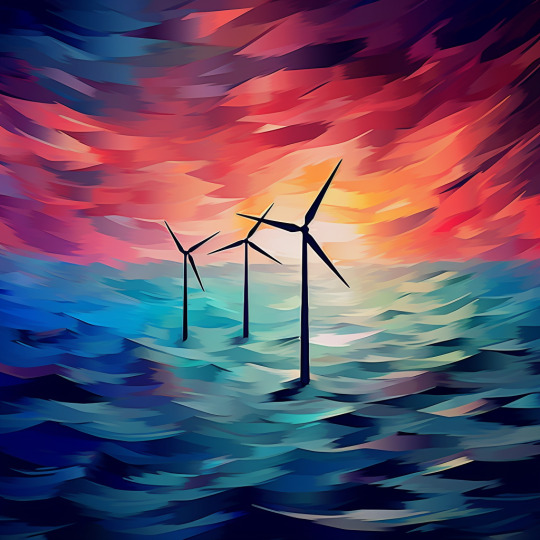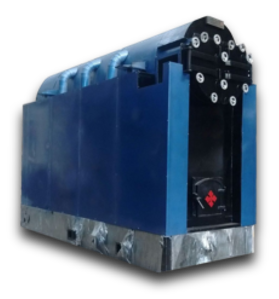#Electricity generation
Explore tagged Tumblr posts
Text

Bonneville Lock & Dam, Bonneville, OR
photo by
Walt Zimmer
23 notes
·
View notes
Text

Tenuous Relationships
Relacións tenue
#photography#photographers on tumblr#david e ragland#original photographers#power generation#not a steamship#electricity generation#liverpool#packet ship#windmill#davideragland#isle of man#united kingdom#irish sea#ferry#seafaring#mar#maritime#barcos#reino unido#transbordador#wind power#wind to electricity#summer 2024
2 notes
·
View notes
Text
Some infographics from this story from the New York Times:


Here are three states, picked because I live in two of them (Illinois and California) and the third because I was curious. California is stupid. Consumers are spending way too much money on natural gas, which is expensive out there, instead of from renewable sources, including geothermal.



4 notes
·
View notes
Text
I actually side with Toyota on this one, in spite of my passion for electric cars. Both our battery technology and our infrastructure need to be improved before we can go with a 100% electric automobile fleet. Meanwhile, I prefer plug-in hybrids as a bridge technology. Our plug-in charges at home, and handles most of our driving as an EV, carrying about 1/8 as much battery payload as a similar-sized full electric. And I don’t require major infrastructure changes in order to take a trouble-free vacation trip. And at least 75% of our miles are pure electric.
In terms of battery cost and resources used, 1 Tesla = 8 plug-in hybrids, for the same amount of lithium-ion batteries.
Or for fossil fuel consumption, 4 plug-in hybrids = 1 conventional automobile (assuming most of your electricity comes from non-fossil fuel sources)
Or for purchase cost, 1 Tesla = 1.5 - 2 plug-in hybrids. (Some other electric cars are quite a bit cheaper though)
NOTE: These are my own back of the envelope statistics. If you take repeated long trips, or your electricity comes largely from fossil fuels, a plug-in hybrid may not be much help. But the pure EV could look even worse by comparison.
#tesla#Toyota#plug in hybrids#fossil fuel usage#electricity generation#comparative economy#green footprint
7 notes
·
View notes
Text
Chauncey Man San Leandro: Electricity Generation Methods
Electricity can be generated through various processes, each with its own advantages, disadvantages, and applications. Here are some common types of electricity generation processes shared by Chauncey Man San Leandro:

Fossil Fuel-Based Generation:
Coal Power Plants: These plants burn coal to produce steam, which drives turbines connected to generators.
Natural Gas Power Plants: Natural gas is burned to spin turbines and generate electricity.
Oil Power Plants: Similar to natural gas plants, but they use oil as the fuel source.
Nuclear Power Generation:
Nuclear reactors use controlled nuclear fission reactions to heat water and produce steam that drives turbines connected to generators.
Renewable Energy Generation:
Solar Power: Photovoltaic (PV) cells convert sunlight into electricity.
Wind Power: Wind turbines capture kinetic energy from the wind and convert it into electricity.
Hydropower: Water flowing through dams or turbines generates electricity.
Geothermal Power: Heat from the Earth's core is used to produce steam that drives generators.
Biomass Power: Organic materials like wood, crop residues, and waste are burned or converted to biogas to generate electricity.
Hybrid Systems:
Some power generation systems combine renewable sources (e.g., solar and wind) with energy storage systems (e.g., batteries) to provide continuous power.
Tidal and Wave Energy:
Tidal and wave energy generators harness the kinetic and potential energy of ocean tides and waves to generate electricity.
Fuel Cells:
Fuel cells combine hydrogen and oxygen to produce electricity, with water as the only byproduct.
Cogeneration (Combined Heat and Power - CHP):
Cogeneration systems produce electricity and useful heat simultaneously, improving overall energy efficiency.
Thermoelectric Generators:
These generators convert heat directly into electricity using temperature differences, often in remote or small-scale applications.
Microgrids:
Microgrids are localized electricity generation and distribution systems that can incorporate various energy sources, including renewables, to provide reliable power to specific areas.
Ocean Thermal Energy Conversion (OTEC):
OTEC systems use temperature differences between warm surface water and cold deep water to generate electricity.
Radioisotope Thermoelectric Generators (RTGs):
RTGs use the heat generated by the radioactive decay of isotopes to produce electricity, often used in space probes and satellites.
Piezoelectric Generation:
Piezoelectric materials generate electricity when subjected to mechanical stress or vibration, used in some specialized applications.

Chauncey Man San Leandro's final words, The choice of electricity generation method depends on factors such as resource availability, environmental impact, cost, and energy demand. Many regions are transitioning to cleaner and more sustainable energy sources to reduce carbon emissions and combat climate change.
#chauncey man san leandro#electricity#electricity generation#power generation#power house#thermal plant#electricity grid#high tension power#USA#california#environment
4 notes
·
View notes
Text
A Really Good Podcast On Fusion, Renewables, Decarbonization, and Politics
#David Roberts#volts.wtf#Podcasts#NeoRadio#Electricity Generation#Renewable Energy#Solar Power#Wind Power#Electric Grids#Politics#informative reblogs
6 notes
·
View notes
Text
Energy: UAE's First Nuclear Power Plant Reaches Full Operational Status
The UAE completes the first nuclear power plant in the Arab world, powering 25% of the nation's electricity needs.
The United Arab Emirates has successfully completed the Barakah Nuclear Energy Plant, the first of its kind in the Arab world. https://twitter.com/RadarHits/status/1831728867368710360 This significant milestone supports the UAE’s long-term energy goals, including providing 25% of the country’s electricity needs. The Barakah plant is expected to generate 40 terawatt-hours of clean electricity…
#alternative energy#Barakah#clean energy#electricity generation#energy#fossil fuel reduction#Gulf energy sector#net-zero goals#nuclear energy#sustainable energy#UAE electricity#UAE nuclear power plant
0 notes
Text
Rasuwagadhi Hydropower Project Connected to National Grid, Easing Power Management in Kathmandu Valley During Winter
Kathmandu, 6 Mangsir 2081 (November 22, 2024): The electricity generated by the 111 MW Rasuwagadhi Hydropower Project, constructed under the leadership of Chilime Hydropower Company, a subsidiary of Nepal Electricity Authority (NEA), has been connected to the national transmission line. Located in Gosainkunda Rural Municipality, Rasuwa, the project began test production from one of its three 37…
0 notes
Text
instagram
0 notes
Text
0 notes
Text
Ethiopia's GERD Reaches 100% Completion in Civil Works - Addis Insight






0 notes
Text
My partner and I had PV solar panels installed when we bought our house four years ago, and I enjoy tracking our electricity generation online. The drop in our power generation over the last hour has been DRAMATIC.
1 note
·
View note
Text
Computational Modeling Aspect of Fuel Cells: A Continuous Powerhouse
Fuel cells are called continuous powerhouses because it is a device that does not store energy but runs continuously to produce electricity as long as the fuel is provided. The byproduct of the fuel cell is water, hence the “clean energy” or “zero carbon emission” technology.
#fuel cell#fluid dynamics#continuous powerhouses#zero carbon emission#clean energy#Anode and cathode reactions for PEMFC#Polymer Electrolyte Membrane Fuel Cell (PEMFC)#Direct Methanol Fuel Cells (DMFC)#Alkaline Fuel Cells (AFC)#Phosphoric Acid Fuel Cells (PAFC)#energy#Electricity generation
0 notes
Text
My heart is an offshore windfarm sustaining through the roughest gusts, against the rising tides, against the oncoming storm; fortifying generation after generation / generation of generations, as power passes through each windspin, winding and aligning our respiratory infrastructure of survival to heal each wound, with earth's each breath.
—Adam Powers

#windfarm#wind power#Adam Powers#clean energy#offshore wind#renewable#renewable energy#environment#Cleantech#renewable power#power generation#electricity generation#change#climate action#earth#planet#climate action now#another world is possible#I can hear her breathing#vibrant#quote#quotes#healing#planet power
1 note
·
View note
Text
Our company is a trusted solar panel installer provider. On this page, you can find reviews from our customers in both text and video formats, confirming their satisfaction with our services.
1 note
·
View note
Text
The Inner Workings of a Thermal Power Plant
Thermodyne, a leading boiler manufacturer, is at the forefront of thermal power plant technology. Our boilers are essential to the process of converting heat energy into electrical power. In a thermal power plant, fuel is combusted in a boiler to produce high-pressure steam. This steam is then directed to a turbine, which drives a generator to produce electricity. Thermodyne boilers are designed to be highly efficient and reliable, ensuring that power plants can operate at peak capacity. Thermodyne boilers are used in a variety of thermal power plants, including coal-fired, natural gas-fired, and oil-fired plants. We also offer boilers for biomass and waste-to-energy plants. For more information contact us at https://www.thermodyneboilers.com/components-working-thermal-power-plant/

#Workings of a Thermal Power Plant#Thermal Power Plant#Electricity Generation#Boiler Manufacturing#Power Plant Efficiency
0 notes